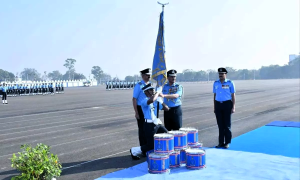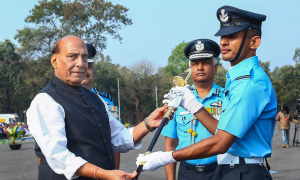The Air Force Common Admission Test (AFCAT) is a gateway for individuals aspiring to become officers in the Indian Air Force. To excel in the Static General Knowledge (GK) section of AFCAT 1 2024, aspirants need to grasp the evolution of Indian polity from 1773 to 1950. This article aims to provide a comprehensive overview of the political landscape during this crucial period, offering valuable insights for defence aspirants.
The East India Company Era (1773-1858):
- Regulating Act of 1773:
- The British Parliament passed this act to regulate the affairs of the East India Company in India.
- It marked the beginning of parliamentary intervention in Indian governance.
- Charter Acts (1813, 1833):
- These acts furthered parliamentary control over the East India Company and initiated social and educational reforms.
- The 1833 act abolished Company’s trade monopoly and laid the foundation for India’s integration with the British Empire.
The Sepoy Mutiny and the Transfer of Power (1858-1947):
- Government of India Act 1858:
- Following the Indian Rebellion of 1857, the British Crown assumed direct control over India.
- The Viceroy became the representative of the British monarch in India.
- Indian Councils Act 1861:
- Introduced indirect election and representation of Indians in legislative councils.
- Laid the groundwork for future constitutional reforms.
- Government of India Acts (1909, 1919):
- The Morley-Minto Reforms (1909) introduced separate electorates for Muslims.
- The Montagu-Chelmsford Reforms (1919) aimed at increasing Indian participation in governance through the introduction of dyarchy.
- Simon Commission (1927):
- The commission to review the working of the Government of India Act 1919 was met with protests for not including any Indian members.
- This marked a turning point in India’s struggle for self-governance.
- Government of India Act 1935:
- Provided for the establishment of provincial autonomy and federal structure.
- The act did not fully satisfy Indian aspirations for self-rule.
The Road to Independence (1942-1947):
- Quit India Movement (1942):
- A mass protest against British rule led by Mahatma Gandhi.
- The movement played a crucial role in shaping India’s struggle for independence.
- Mountbatten Plan and Independence (1947):
- The Mountbatten Plan led to the partition of India and the creation of India and Pakistan.
- India gained independence on August 15, 1947.
Constitutional Development (1947-1950):
- Constituent Assembly (1946-1950):
- Drafted the Constitution of India under the leadership of Dr. B.R. Ambedkar.
- The Constitution came into effect on January 26, 1950, marking the birth of the Republic of India.
Conclusion:
A thorough understanding of the evolution of Indian polity from 1773 to 1950 is indispensable for AFCAT 1 2024 aspirants. The knowledge of this historical journey not only enriches one’s understanding of the constitutional framework but also instills a sense of responsibility towards safeguarding the values enshrined in the Constitution. As candidates prepare for the Static GK section, let the lessons from India’s political history inspire them on their journey toward serving the nation with dedication and commitment.


















